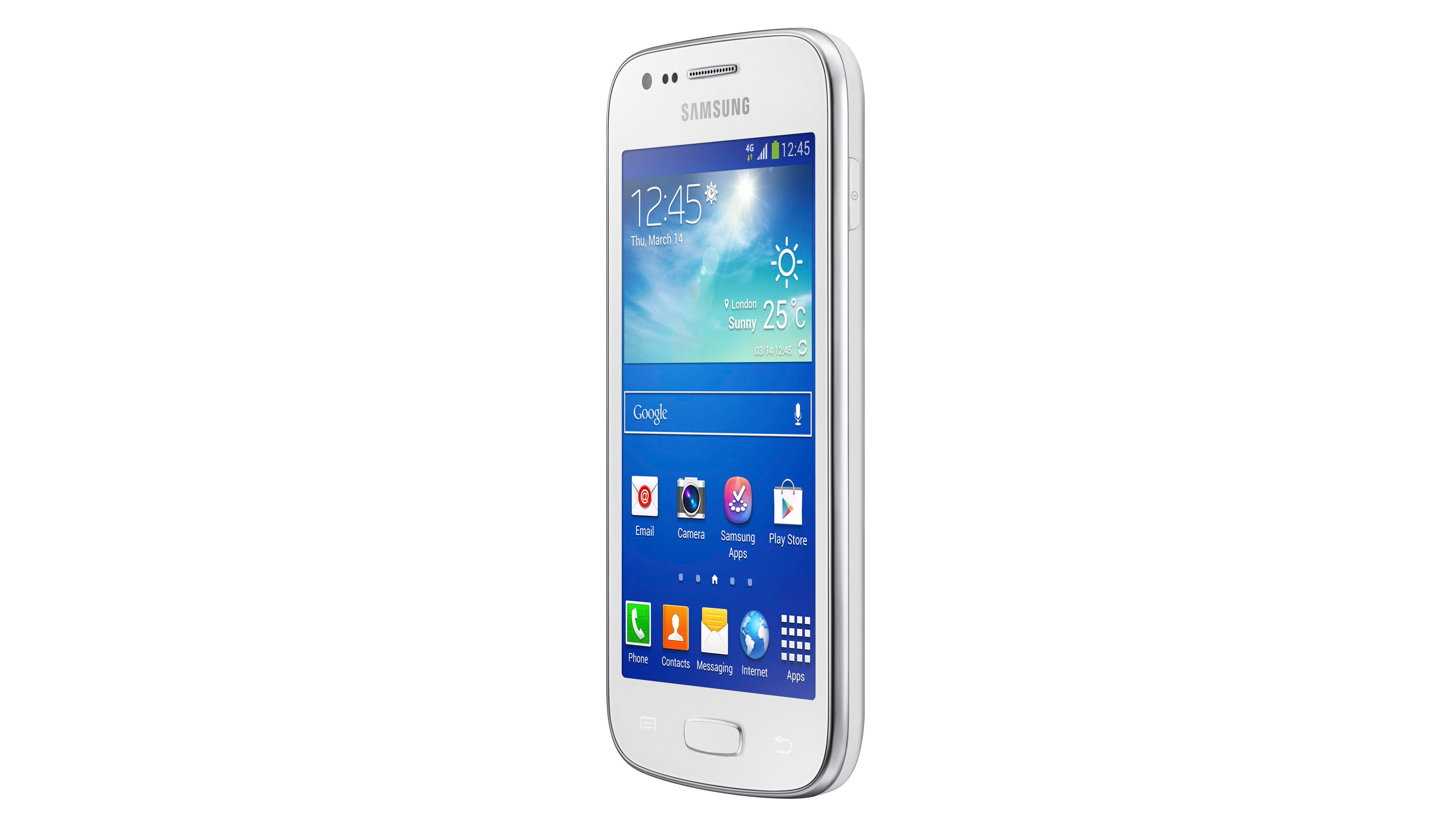TechRadar Verdict
There are very few smartphones at this price which offer 4G, and along with a decent UI and battery life the Galaxy Ace 3 is a good value handset.
Pros
- +
Bright Screen
- +
Decent Battery
- +
Intuitive UI
- +
4G
Cons
- -
A little heavy
- -
Awkward keyboard
- -
Disappointing Camera
- -
Not HD
Why you can trust TechRadar
The Samsung Galaxy Ace 3 continues the Korean firm's drive to create an Android device for every single niche in the market.
Samsung's current range has the powerhouses of the Samsung Galaxy S4 and the Galaxy Note 3, followed up by the less powerful yet still impressive Galaxy S4 Mini.
Below that sits the Galaxy Ace 3, with the Galaxy Fame and the Galaxy Young rounding off the list.
Being one of the lower-specced handsets, it's reasonable to assume that the pricing would match, and you wouldn't be far wrong.
SIM prices start from around £200, $225, with 4G contracts in the UK as low as £19pm, or 3G for £17pm.
This puts the Galaxy Ace 3 in square contention with the newly launched HTC Desire 500 and the Nokia Lumia 625, as well as being a shade more expensive than the Samsung Galaxy S3 Mini.
Being a more budget-oriented device, the Galaxy Ace 3 has a lot to compete against. Sitting within the Galaxy range should help, though - as should an existing user base that might be looking to upgrade from the original Galaxy Ace.
In order to convince you to part with some (though admittedly not much) of your hard-earned cash, the Galaxy Ace 3 packs in a few surprises. The more observant will have noticed that it is 4G enabled, for example.
In truth, this will be the biggest selling point of the Galaxy Ace 3, as there is not a lot else that it has to shout about. Running only a dual-core 1.2GHz processor, when the HTC Desire 500 offers a quad-core, seems a disappointing.
I'm still a little sceptical of the need for such power in low-end devices, though, so I'll take a look at that later.
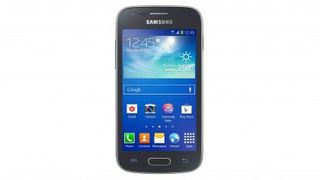
Another key specification on the modern smartphone is the screen. The Galaxy Ace 3 comes with a 4-inch, 480 x 800 screen, meaning 233ppi. It's a long way off the Galaxy S4, with its 441 ppi, but it's not too bad.
It seems a little odd that the screen matches that of the HTC Desire 500, yet somehow seems brighter and crisper. Then again, Samsung is famed for putting truly spectacular screens onto some of its devices.
To cope with that screen, the Galaxy Ace 3 measures in at 121.2 x 62.7 x 9.8mm. This puts it in the same size bracket as the Galaxy S4 Mini, although the extra 12g of weight is very noticeable.
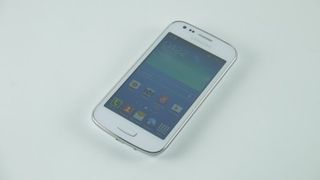
Previous TechRadar reviews have commented that added weight can sometimes help make a device feel more premium, but the Galaxy Ace 3 feels a little heavy.
Besides the 4G antenna and 4-inch screen, the chassis also encases the more standard smartphone features: Wi-Fi, Bluetooth 4.0, GPS and GLONASS, and NFC.
The Galaxy Ace 3 is shaping up to fit nicely in the Galaxy range, and this is aided by a strong design ethos from Samsung. Put the Galaxy Ace 3 alongside any of the Galaxy phones since the Galaxy S3 and the curvier nature is instantly recognisable.
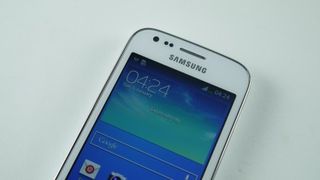
You can pick up the Galaxy Ace 3 in two colors. I'd tell you to guess what they are, but black and white are too obvious to make the game fun. Everyone would be disappointed if it was just black, though.
There's little to say about the colors themselves, but what is noticeable is that the sensors by the front-facing camera are far more noticeable on the white version. Hopes of a notification light were also dashed.
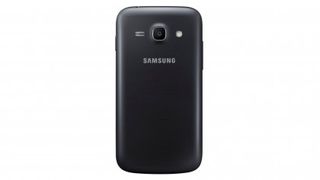
A faux chrome band wraps around the chassis, making it look a little more premium, as well as breaking up the block white or black color.
As with all smartphones, the screen takes up most of the front. The home button, as well as the back and menu soft-keys sit below, following the same Samsung layout first seen on the Samsung Galaxy S.
The volume rocker sits at the top of the left-hand side, with the power lock button opposite on the right. This leaves the 3.5mm port sat on the top, and the microUSB/charger port on the base.
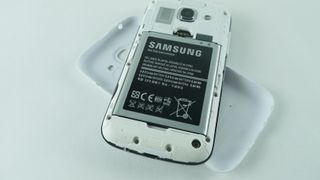
You knew that, though, didn't you? All Galaxy models, from the Fame through to the S4, follow in the same vein.
Tucked behind a removable plastic back cover is an 1800mAh battery, as well as the Samsung standard microSD slot. I'm really thankful for its inclusion, although I should mention that the Galaxy Ace 3 does come with a respectable 8GB internal storage, even if you can't use all of it.
The added internal storage will give the Galaxy Ace 3 a boost, as the Desire 500 has less than 1GB of accessible storage, compared with the Ace's 5GB. It is beaten in the camera department, with the Galaxy Ace 3 packing only a 5MP rear sensor. A VGA sensor sits in the top left, above the screen.
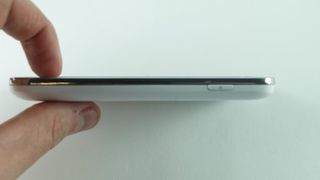
It's hard to be definitive about how much this affects camera performance, as the Galaxy S3 Mini came with only a 5MP sensor and was still very impressive.
In terms of size, the Galaxy Ace 3 hits a nice medium. The race to ever-bigger screens continues (check out the Sony Xperia Z Ultra and its massive 6.44-inch beast), but the smaller stature of the Galaxy Ace 3 means that the entire screen can be accessed with one hand.
Overall, the design of the Galaxy Ace 3 isn't phenomenal, if only because it fits so nicely within the Galaxy range, and that can't be a bad thing. It has a lot to live up to, but bringing 4G to the lower end of the market should really help.
